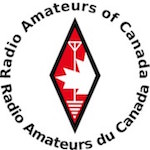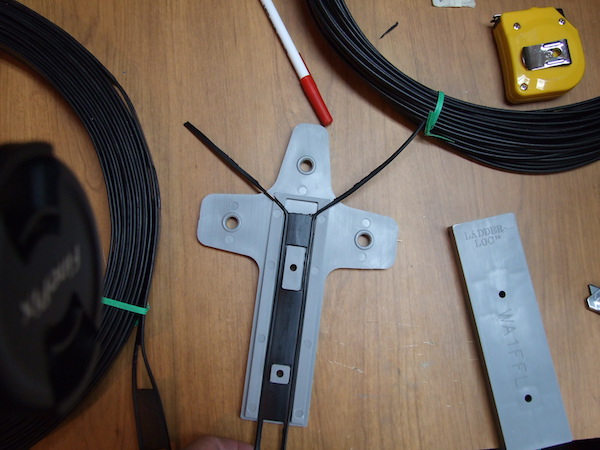The Double Doublet Antenna is Where 80 and 40 Meters Can Coexist Peacefully!
What's a double doublet antenna? How does it work? What is it useful for? The doublet, also known as doublet aerial and dipole, is relatively well known by many ham radio operators. But a double doublet?
The following summary of a recent exchange I had with a fellow ham radio operator, who was asking me for advice, will provide answers to the questions above.
I am new at this so any help will be great. I am moving into a new house and I am planning on putting up a dipole for 40 and 80 meters. It looks like I can place it parallel to the ground but one side will be at a 90-degree angle from the other because of a tree situation. Will that work OK? Any advice about making it work for both ham bands? Thanks,
David
A doublet antenna (dipole), cut for 80 meters, will not work on 40 meters because 7 MHz is an even harmonic multiple of 3.5 MHz.
This means that if we try to feed 7 MHz to 3.5 MHz (80 meter) dipole, the 7 MHz current would be at a minimum (null) at the center feed point of the 80-meter dipole. The result would be a very high (impractical) impedance at 7 MHz - whereas the impedance of an 80-meter dipole, used at 3.5 MHz, is a very workable 72 ohms (in fact, closer to 50 ohms if installed at 30-50 feet above ground, which is often the case).
However, two doublets - one for 80 and one for 40 - having a common feed point - will work quite well. That's the arrangement I have at my QTH.
Having one leg of a dipole at 90 degrees (or greater) to the other leg does not pose a problem. Admittedly, the radiation pattern will be distorted, compared with the theoretical pattern of a classic dipole but, the antenna will perform quite well enough... especially considering that you do not have the room to install an 80-meter dipole in a straight line anyway!
Please note, however, that if the angle is less than 90 degrees between the doublet antenna legs, then the antenna performance will drop because of signal cancellation between the two legs of the dipole.
Thanks a lot Claude. However, I am intrigued by your set-up of separate antennas for the two bands.
- Can you tell me how you have it arranged?
- How do you lace (connect) both antennas together?
- How do you get the two leads from the antennas to the radio?
- And what products do you use for the wire and lead?
I assume you have some sort of in-line e switch to switch from one doublet to the other!
The Double Doublet Antenna Explained
First, let me refer you to this page of basic info on the dipole antenna.
With that basic information in mind...
You can have two dipoles fed at a common feed point. Here is a schematic diagram to illustrate the set-up:
Note that no switching arrangement is necessary!
For example, let’s assume that you cut your 80-meter doublet antenna to resonate at 3.7 MHz and the 40-meter doublet to resonate at 7.15 MHz.
When you transmit RF energy at 3.7 MHz into the transmission line, the 80-meter dipole will be excited because it is made (cut) to resonate (vibrate) at 3.7 MHz. Meanwhile, the 40-meter dipole does not vibrate at 3.7 MHz. It remains idle because it does not dance to that low frequency tune... it's just too slow for its taste! ;-)
On the other hand, if you transmit RF energy at 7.15 MHz into the transmission line, the 40-meter dipole will be excited because it is made to resonate (vibrate) at 7.15 MHz. Meanwhile, the 80-meter dipole does not vibrate at 7.15 MHz because it does not dance to that higher frequency tune... it's just too fast for its taste! ;-)
The same happens when receiving 80 meter and 40 meter RF energy off the air.
Doublet antennas are like tuning forks. They only vibrate best at the frequency they have been cut for.
You can feed the double doublets with coaxial cable if you like. However, I prefer ladder line (450 ohm open wire transmission line) because of its extremely low loss characteristic (9-11 times less lossy than RG-8X)!
I use the LadderLoc(TM) center insulator with ladder line.
You will find an annotated installation diagram for the LadderLoc(TM) here (PDF file).
I also like to use #14 (168 strands of #36 wire) FLEX-WEAVE(TM) wire by Davis RF for long antenna spans such as for 80 meters. It is extremely strong and very flexible to handle. I use the one with a black highly UV-resistant PVC jacket. Clear and camouflage green jackets are also available.
A short doublet antenna would not require as strong a wire but it should, nevertheless, be jacketed for better long-lasting performance.
The center insulator, ladder line, antenna wire, end insulators are available at many online amateur radio supply stores. Just look for them by their brand names.
I have already had many years of fun with this 80m-40m double doublet. I'm sure you will too.
73 de VE2DPE
73 de VE2DPE
Claude Jollet
104-30 avenue des Berges,
Notre-Dame-des-Prairies, Québec, Canada J6E 1M9
QTH Locator: FN36gb
Disclosure
If
you make a purchase via a link on this site, I may receive a small
commission on the transaction, at no extra cost to you. Thank you!
(One word queries work best)
HF Antennas
Section
Contents
VHF/UHF Antennas
FOUND THIS
SITE
USEFUL?
VE2DPE
Is a member
in good standing
of



Also a proud member of an international community of solopreneurs
using SoloBuildIt!
(SBI!)
to promote my self-published eBooks
since 2005.
See my review
of this unique product for online businesses.
CQ CQ CQ
If you have a question, a comment or a topic you would like me to cover, please do not hesitate to ask here.







